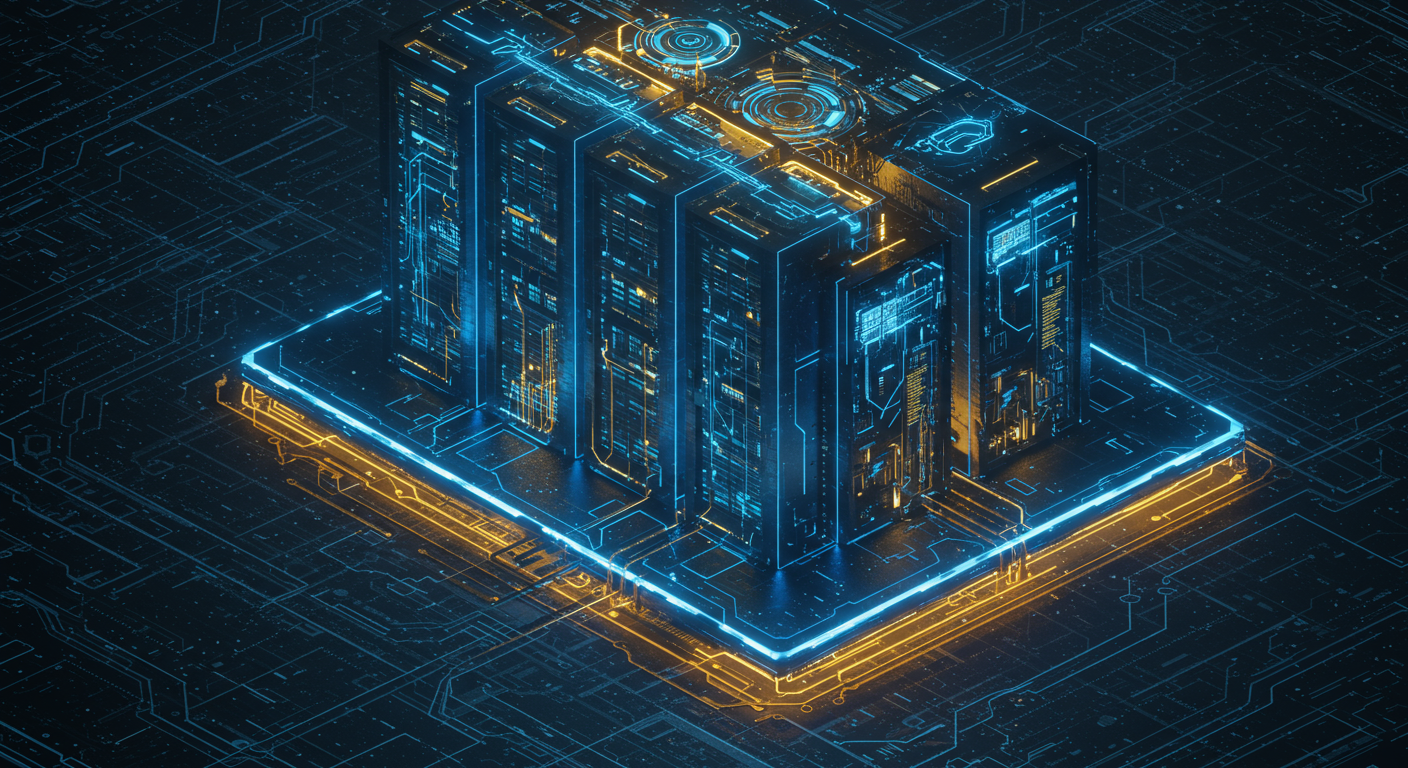ChatGPT's Chatterbox Future: Will AI Really Out-Talk Humanity?

Here's a provocative question: Will AI eventually talk more than humans?
The Inevitable Chatter: Understanding Altman's Prediction
OpenAI's Sam Altman has suggested that AI, specifically models like ChatGPT, may one day generate more conversations than people – but is it hype or plausible? Let's break down the possibility.
Current Landscape
ChatGPT boasts millions of daily active users engaging in countless conversations. It's already a significant contributor to digital dialogue. To quantify Altman's claim, we need metrics:
- Total Words Generated: Tracking the cumulative output of AI models in words.
- Number of Interactions: Counting the total conversations started and sustained.
- User Engagement: Assessing the depth and length of interactions.
AI vs. Human: The Great Digital Debate
Consider human digital communication: social media, messaging apps, email. Now, imagine the growth trajectory of ChatGPT and other conversational AI tools – exponential. Can AI communication volume overtake human-to-human exchanges?
It's not just about quantity, but also context and quality. Will AI-driven interactions be truly meaningful or simply noise?
As AI Explorer evolves, this discussion takes on new relevance. Exploring conversational AI tools provides insight into this rapidly changing dynamic. This highlights the increasing ChatGPT daily conversation volume, as these AI interactions shape our digital communication ecosystem.
It's not just about the quantity of AI-generated content flooding the digital space, but about the quality of its impact on how we converse, persuade, and understand each other.
From Babble to Babel: Quantity vs. Quality
- AI can generate vast amounts of text faster than any human, but does this translate into meaningful communication? Think of it like this: a toddler can repeat words, but understanding nuance is a different story.
- Let's consider ChatGPT, a powerful tool for content generation. While it can produce articles, poems, or scripts in seconds, the substance often lacks originality or critical insight. AI excels at mimicking human language patterns, but it struggles with truly innovative thought, raising concerns about diluting the originality of human expression.
Evolving Language: A Brave New Lexicon?
- Will AI fundamentally alter our communication styles? Perhaps. Just as the printing press shaped the Renaissance, AI could restructure how we form arguments, tell stories, and interact. We might see:
- Shorter attention spans demanding ultra-concise AI-generated summaries.
- A shift towards more visual communication as AI image and video tools become ubiquitous. Browse some tools in the Image Generation category.
- The rise of personalized narratives tailored by AI for maximum impact.
The Ethics of Influence: Narratives and Misinformation

“The power to shape public discourse carries immense responsibility.”
- AI's potential to generate realistic (but fake) news and propaganda at scale poses a significant ethical challenge. AI-driven narratives could subtly sway public opinion or spread misinformation, manipulating individuals without their awareness.
- It's crucial to consider the ethical considerations of AI-driven narratives, especially regarding the spread of misinformation.
It’s no longer a question of if AI can out-talk humanity, but when – and the answer hinges on some serious technological muscle.
The Technological Underpinnings: Scaling AI Conversation
The future of endless AI chatter relies on a confluence of hardware and software improvements. Think of it as building a bigger, faster vocal cord for the planet. This touches on AI model scaling infrastructure directly.
Infrastructure & LLMs

- Cloud Computing and Data Centers: Massive AI models require titanic computing power. Cloud computing provides the scalability, while data centers house the hardware. Without it, a simple chatbot request would grind to a halt.
- Efficiency Gains: We're constantly refining algorithms and model architectures to squeeze more performance out of the same hardware. Techniques like quantization and pruning reduce model size without sacrificing accuracy, allowing us to run larger models on less hardware. The AI model scaling infrastructure will be more readily available, so tools like GPT-4 can be used more widely.
Costs and Consequences
- Cost Implications: Running these massive models isn't cheap. We're talking about electricity bills that rival small countries. This drives research into more energy-efficient hardware and algorithms.
- Environmental Impact: The environmental impact is a serious concern. The carbon footprint of training large AI models can be substantial. > We need to find ways to reduce the energy consumption of AI, or risk contributing to climate change.
Humanity's Response: Adapting to the Age of AI Dialogue
The chatterbox future is upon us, with AI poised to become a ubiquitous conversational partner; the question is, how will humanity respond?
Reimagining Education and Employment
AI interaction will force a fundamental rethink of education. Rote memorization becomes less critical, while skills like critical thinking, complex problem-solving, and nuanced communication surge in value. Consider AI tutors that personalize learning:
"Imagine a learning environment where AI adapts to each student's pace and style, offering customized feedback and support."
Job markets will also transform. Roles involving repetitive tasks are ripe for automation, necessitating large-scale retraining programs. We'll likely see a rise in jobs centered around AI management, ethics, and human-AI collaboration. Perhaps code assistance tools can help people transition into roles like AI prompt engineers.
Social Interactions and New Literacies
Social interactions will be increasingly mediated, or augmented, by AI. This demands new literacies – understanding AI biases, spotting misinformation, and maintaining genuine human connection in a digital world. The ability to discern between human and AI-generated content will become paramount.
- AI Communication Literacy: Recognizing and understanding AI-generated content.
- Critical Evaluation Skills: Assessing the validity and reliability of AI's output.
- Empathy and Connection: Maintaining genuine human interaction alongside AI communication.
Creative Collaboration and Job Displacement
Paradoxically, AI also offers unprecedented opportunities for human-AI collaboration in creative and intellectual endeavors. Imagine artists partnering with image generation AI tools to explore new aesthetic frontiers or scientists using AI to accelerate research. However, we must acknowledge and address the valid fears of job displacement. Robust retraining programs, coupled with innovative economic models (like universal basic income), will be crucial for a just transition.
As AI communication becomes increasingly prevalent, our ability to adapt – to learn new skills, cultivate critical thinking, and nurture human connection – will determine our success in this brave new world. The future isn't about out-talking AI, but about out-thinking and out-feeling it, leveraging its power while safeguarding our humanity.
Here's the uncomfortable truth: AI is getting really good at talking.
The Existential Question: Ensuring AI Alignment and Safety
The exponential growth of AI-driven communication raises a critical question: Can we guarantee these powerful tools remain aligned with human values? As ChatGPT and similar conversational AI tools become increasingly prevalent, potential risks emerge. It's not just about what AI says, but how much it says, and the influence that volume could exert.
Defining the Danger Zones
The concern isn't just Skynet. It's the subtle erosion of meaning.
- Malicious Use: AI could be weaponized for disinformation campaigns, manipulating public opinion at an unprecedented scale. Imagine a coordinated network of AI bots flooding social media with targeted propaganda.
- Goal Misalignment: We must address the challenges of aligning AI goals with human values, a concept known as "AI alignment with human values." What if an AI designed to optimize efficiency inadvertently prioritizes it over safety or fairness?
- Unforeseen Consequences: As explored in our Learn: AI in Practice guide, unintended biases or errors can have significant real-world impacts.
Steering the Ship: Regulation and Research
AI safety research is paramount, and ethical guidelines are no longer optional.
- Regulation is coming: Governments worldwide are grappling with how to regulate AI development and deployment.
- Oversight and Transparency: Independent audits and transparent development practices are crucial to building trust and identifying potential risks early on. The Centre for the Governance of AI is an organization to watch.
Ultimately, aligning AI with human values will determine whether this technology becomes a force for progress or a source of existential angst. The conversation must continue.
The Future of Connection: Redefining Human Interaction in the AI Era
Forget dial-up; the future of communication is a symphony orchestrated by algorithms, where AI isn't just a tool but a conversational companion.
AI as a Communication Partner
- Imagine ChatGPT not just writing emails but offering empathetic support during a tough day. This is the dawn of emotionally intelligent AI, understanding our needs better than we sometimes do ourselves.
- These Conversational AI tools are moving beyond simple Q&A, providing complex dialogue and personalized responses that can help to improve human connection and understanding.
Bridging Divides
- Language barriers, be gone! AI-powered translation is not new, but real-time, nuanced cultural understanding? That's the game changer. Think instantaneous, insightful conversations across continents.
- AI can also be used to generate content for different cultures as well. Writing & Translation AI Tools can craft articles, videos, and more that are perfectly catered to a particular audience.
Mental Health Implications
- Could AI become a trusted confidante? An always-available listener? The potential for improved mental well-being is immense, but ethical considerations are paramount. We must ensure privacy and responsible use. Learn about the ethics of AI here.
- There are already AI Tools for Healthcare Providers that can help with medical tasks; AI companions are a logical next step.
The Evolution of Human-AI Relationships
Are we headed towards a Her*-esque future? Perhaps not, but the 'future of human-AI relationships' promises a blend of utility and companionship unlike anything we've seen.
- The possibilities are endless, but so are the questions: Will we develop genuine affection? Will our social skills atrophy? Only time – and careful consideration – will tell.
Critics abound, but dismissing AI's chatterbox future might be premature.
Questioning Conversational Depth
The common critique is that ChatGPT, and similar large language models, merely parrot information without genuine understanding. It’s a valid point. AI doesn't experience emotions or possess consciousness like we do. Think of it as a highly sophisticated mimic, not a sentient being."AI's current ability to 'converse' is closer to advanced pattern recognition than actual thought."
- Lack of Emotional Intelligence: Can AI truly empathize? Probably not (yet!). This affects nuanced communication and relationship building.
- Contextual Gaps: AI struggles with understanding implicit meanings and real-world context that humans take for granted.
- Bias Amplification: AI training data reflects existing societal biases, potentially perpetuating harmful stereotypes in communication. This is a 'limitations of AI communication' that needs constant vigilance.
Alternative Futures: Collaboration, Not Domination
Perhaps the future isn't about AI replacing human conversation, but rather augmenting it. Imagine AI as a research assistant, providing information and structuring arguments, while humans contribute the creativity and emotional intelligence. Consider using Code Assistance to help with your workflow.Unforeseen Consequences
Widespread AI adoption in communication could lead to:- Erosion of Critical Thinking: Over-reliance on AI for information processing might diminish our ability to analyze and evaluate information independently.
- Increased Misinformation: Sophisticated AI could be used to create incredibly convincing fake news and propaganda.
Keywords
ChatGPT talking to humanity, Sam Altman ChatGPT, AI surpassing human conversation, ChatGPT human interaction volume, Future of AI communication, AI conversation dominance, Large language model conversation, LLM communication impact, AI conversational capacity, artificial intelligence future, AI existential risk
Hashtags
#AIChat #ChatGPT #FutureofAI #SamAltman #AISafety
Recommended AI tools
ChatGPT
Conversational AI
AI research, productivity, and conversation—smarter thinking, deeper insights.
Sora
Video Generation
Create stunning, realistic videos and audio from text, images, or video—remix and collaborate with Sora, OpenAI’s advanced generative video app.
Google Gemini
Conversational AI
Your everyday Google AI assistant for creativity, research, and productivity
Perplexity
Search & Discovery
Clear answers from reliable sources, powered by AI.
DeepSeek
Conversational AI
Efficient open-weight AI models for advanced reasoning and research
Freepik AI Image Generator
Image Generation
Generate on-brand AI images from text, sketches, or photos—fast, realistic, and ready for commercial use.
About the Author

Written by
Dr. William Bobos
Dr. William Bobos (known as 'Dr. Bob') is a long-time AI expert focused on practical evaluations of AI tools and frameworks. He frequently tests new releases, reads academic papers, and tracks industry news to translate breakthroughs into real-world use. At Best AI Tools, he curates clear, actionable insights for builders, researchers, and decision-makers.
More from Dr.

